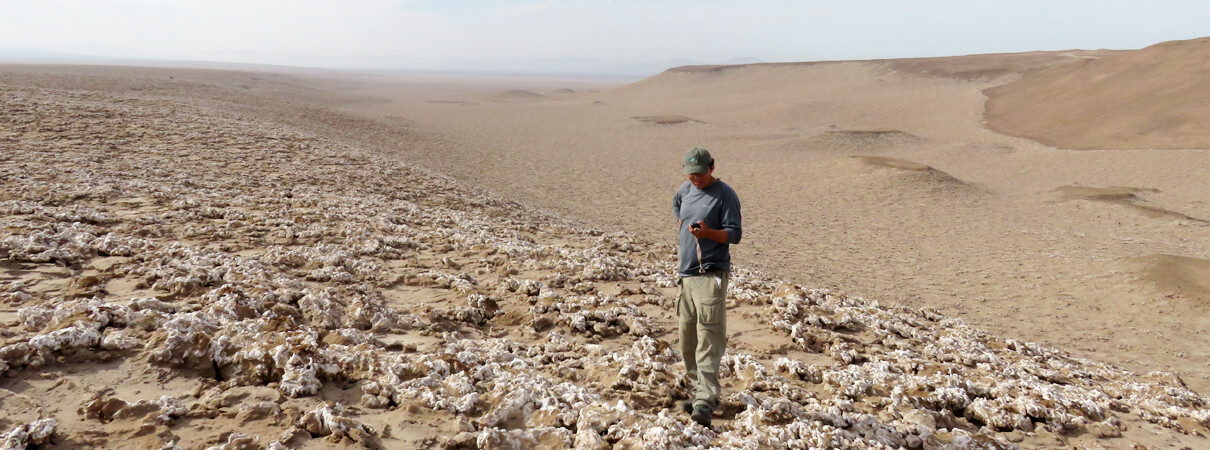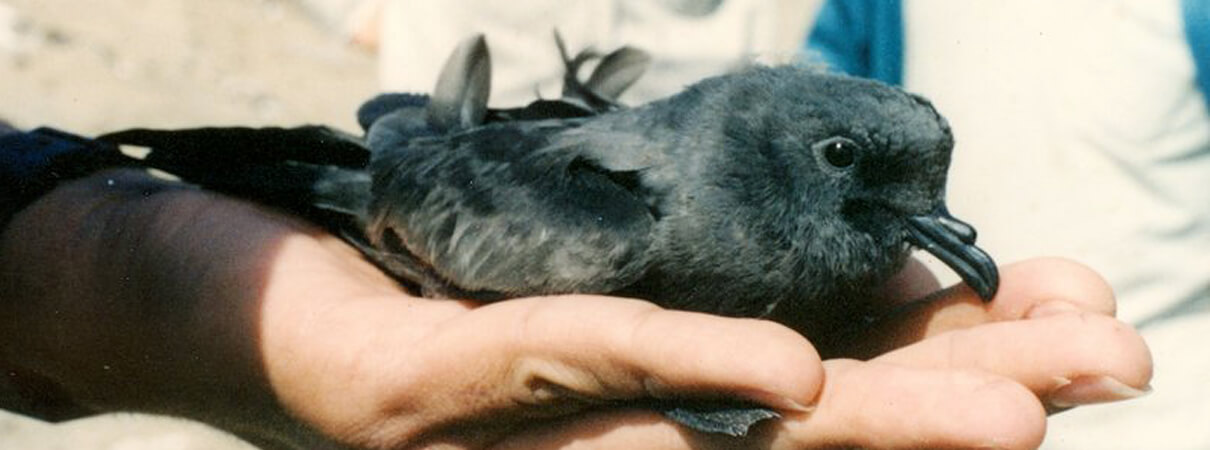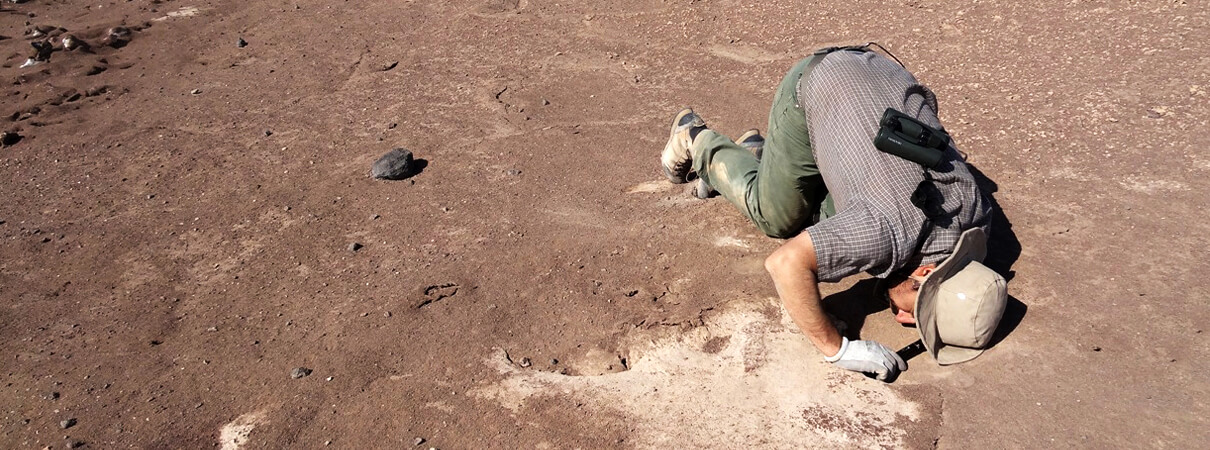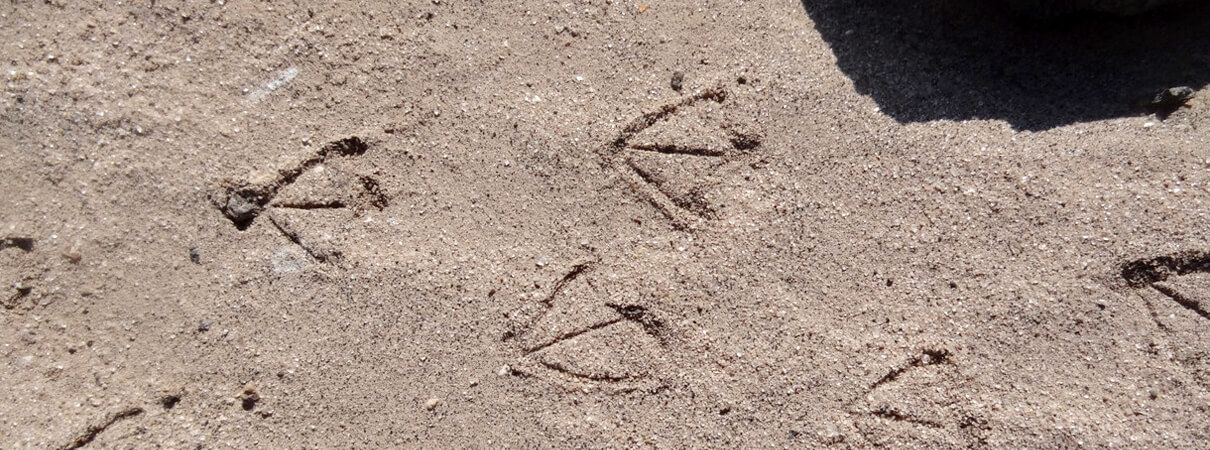Desert Discovery Sheds Light on Mysterious Storm-Petrel's Life Cycle
A delicate little charcoal-gray bird shifting around a single white egg hidden under a crumbly ledge of phosphate-limestone crust. That scene—set in the middle of a vast open moon-like place in the Atacama Desert of Chile—presented biologists with their first glimpse of desert-nesting Markham's Storm-Petrels.

Fieldwork in progress at the Salar Grande nesting site. Photo by Heraldo Ramírez
This 2015 discovery was made by a team of biologists from the Chilean Network of Ornithologists (Red de Observadores de Aves y Vida Silvestre de Chile—ROC) and helped solve a long-standing mystery about the elusive species.
Until then, nesting Markham's Storm-Petrels had been found at only two sites on Peru's Paracas Peninsula, which wasn't believed sufficient to support the species' estimated global of more than 30,000 birds.

Members of the ROC Markham's Storm-Petrel research team during the field trip to Arica, August 2016. From left to right: Ronny Peredo, Fernando Medrano, Fernando Díaz, and Rodrigo Barros. Photo by Heraldo Ramírez
The Chilean ornithologists returned to the desert in 2016, with support from two ABC programs: the William Belton Conservation grant and The Search for Lost Birds. The researchers hoped to determine the status of the colony, look for other nesting sites, and assess what threats might be affecting the desert-nesting birds.
Based on that 2016 expedition, we now know that there are at least seven Markham's Storm-Petrel colonies in Chile and Peru. In Chile, a total of five known colonies are located 10-40 kilometers inland in two areas near Arica—Pampa de Chaca and Pampa de Camerones—and South of Iquique, in Salar Grande.
The relatively recent discovery of these five colonies was preceded by Peruvian ornithologist Jaime Jancke's 1993 discovery of two nesting colonies near the coast of Peru's Paracas Peninsula. The coastal Paracas site is more typical of seabirds, which generally choose predator-free islands or headlands. Seabirds typically nest on islands, and proximity to the ocean is essential—or so we thought. The 2015 discovery of storm-petrel nests in Chile's desert was a game changer.
Mysterious Markham's Storm-Petrel
Markham's Storm-Petrel was first described by naturalist Osbert Salvin in 1883, but information about its nesting habits eluded ornithologist for 110 years. Until the discovery of the Paracas nesting colony in 1993, the species had only been described by specimens obtained at sea.
In Spanish, these birds are known as “Golodrinas del Tempestad,” which translates to Storm Swallows. Swallows and storm-petrels share the same wing and tail shape, and the same quick, agile, almost bat-like movements. But storm-petrels are more closely related to the giant albatross, with the characteristic tube-like nostrils as a tell-tale clue.

Markham's Storm-Petrels may look like swallows in flight, but the small birds are more closely related to albatrosses, as their tube-shaped nostrils suggest. Photo by Jaime Jahncke
Because ground-nesting seabirds are so vulnerable to land predators—including rodents, mongoose, cats and dogs—flat mainland deserts are not thought to be typical nesting habitat for these sea-going birds. But there are several known exceptions, including the Damara Tern in Namibia and South Africa, the Gray Gull in Chile, and now Markham's Storm-Petrel in Chile.
There are also burrow-nesting petrels in mountains of nearly every major island group, including the Black-capped Petrel in the Caribbean, Hawaiian Petrel, Fiji Petrel, and Tahiti Petrel.
Defining the Threats
As the ROC team continues their work in the Chilean desert, they have documented multiple threats to the storm-petrels. Expanding mining operations threaten adults and destroy fragile nesting habitat. Incubating birds, their eggs and chicks are at risk of being trampled or crushed. And fledglings must navigate a gauntlet of lights, power lines, and communication lines when they cross the desert.

An ROC team member examines a Markham's Storm-Petrel nesting burrow in the Chilean desert. Photo by Heraldo Ramírez
The key, says Heraldo Ramírez, Chilean biologist and member of the ROC team, is to communicate with local landowners, the mining companies, and government officials. Already, the ROC team has brought people out to see the birds and their fragile habitat.
With ABC support, the ROC team will use nest cameras to observe desert-hatched storm-petrel chicks and document any predation at these colonies. The expansion of mining operations and associated human settlements will result in more collision hazards, light pollution, garbage, and stray animals in the region.
Another concern is that human garbage attracts opportunistic predators, such as dogs and vultures, which they prey on the petrels.

Markham's Storm Petrel footprints in the desert sand near a nesting burrow. Photo by Heraldo Ramírez
The discovery of these five new nesting sites in Chile's desert advances our knowledge about Markham's Storm-Petrels. It also raises an interesting question: Could the Ringed Storm-Petrel—another Lost Bird—also be nesting in the desert?


















































